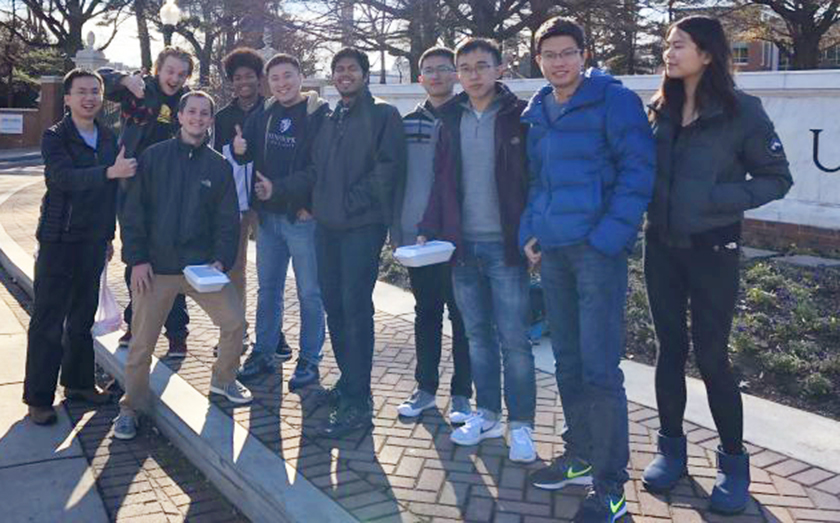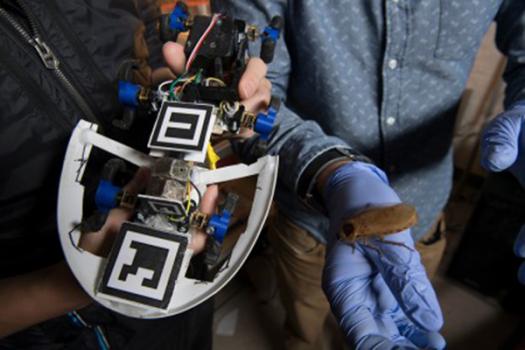Science News Learning, STEM Outreach
Learning about locomotion with cockroach-like robots

Not every high school student acknowledges the brilliance of a cockroach. Evains Francois, a junior at Baltimore Polytechnic Academy, studies roaches and designs robots based on their movements.
Evains is fully immersed in science research, inspired, in part, by articles he read through the Science News in High Schools program. When Evains was a high school sophomore, he loved biology and robotics. He just didn’t know he could combine them.
Then in his “Introduction to Research” class at Baltimore Polytechnic Academy, he read a Science News article about scientists who’d designed more agile underwater robots modeled on the efficient swimming motions of penguins and dolphins. Evains was hooked. “Roaches, as a species, are magnificent,” Evains said. “They can maneuver through really rough terrain, such as forest floors, flawlessly with little to no resistance. They’re the ideal machine when we’re talking about maneuvering and circumnavigating obstacles.”
Science News makes it very easy for me to understand what the latest research is saying.
Evains is designing and building robots in the Terradynamics Lab at Johns Hopkins University. His mentor Dr. Chen Li, an Assistant Professor of Mechanical Engineering who directs the lab, studies how animals like cockroaches and snakes can move efficiently in complex terrain, like debris on the forest floor or building rubble.
The lab constructed a multi-legged robot mimicking the insect’s running patterns. Evains’ discoveries could facilitate robots that rescue people in natural disasters, such as earthquakes.Inspire the next generation of STEM leaders by becoming a member of the Society.

In the lab, Evains researches the way cockroaches move through such terrain and simulates those movements with robot models. He watches videos of roaches in super slow motion to see how their body and legs work together for different tasks. “Dr. Chen Li doesn’t have a specific question, it’s more of an investigation,” Evains explained. “We are trying to discover general physics principles using systematic experimental investigation. Which components of the cockroach make it able to maneuver the way it does? Is it the angle of their legs as they approach objects, their shape, or their speed? I’m studying all those variables with my robot and changing them to see how it impacts the robot’s motion.”
Evains plans to enter his research into competitions like Regeneron Science Talent Search and Intel ISEF. “This program is really awesome,” he said. “I’ve learned so much that other high school students don’t have the opportunity to learn.”
They’re the ideal machine when we’re talking about maneuvering and circumnavigating obstacles.
Evains is one student out of millions participating in the Science News in High Schools program, which provides copies of Science News magazine and an educator’s guide for teachers to high schools around the country and worldwide.
“I knew nothing about biomimetics until I read the Science News article,” Evains said. “Science News makes it very easy for me to understand what the latest research is saying. Even though I’m now reading primary literature, I still look at Science News for fun and to keep up with science.”


